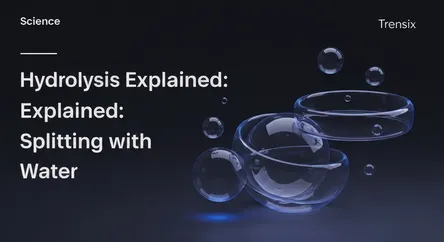Science
Hydrolysis Explained: Splitting with Water

Discover hydrolysis, the fundamental chemical reaction where water breaks down complex molecules, and learn its vital role in biology and industry.
What is it?
Hydrolysis is a fundamental type of chemical reaction where water is used to break down the chemical bonds within a larger substance. The term literally means "to split water." In the process, a molecule of water (H₂O) is split into its constituent parts—a hydrogen cation (H+) and a hydroxide anion (OH⁻)—which then attach to the fragments of the larger molecule that has been cleaved. This reaction is the opposite of a condensation reaction, where two smaller molecules join together by removing a water molecule.
Why is it trending?
The concept of hydrolysis is trending due to its increasing application in green technology and sustainable industries. It is a key process in the production of biofuels from biomass, where complex carbohydrates like cellulose are broken down into simple sugars for fermentation. Furthermore, advanced research into "hydrolytic" processes is leading to new methods for recycling plastics and other polymers, turning waste materials back into valuable chemical components and contributing to a circular economy.
How does it affect people?
Hydrolysis is fundamental to human life, most notably in digestion. Enzymes in our digestive system use hydrolysis to break down complex food molecules like proteins, fats, and carbohydrates into smaller units that our bodies can absorb and use for energy. Industrially, it is used in the manufacturing of soap, the production of glucose syrups from starch, and in various food processing applications. It is a ubiquitous and essential process happening within us and around us every day.